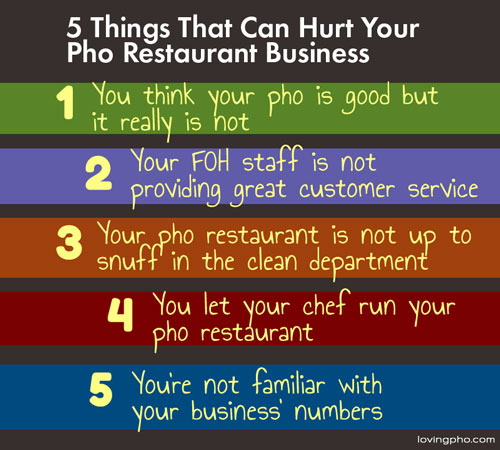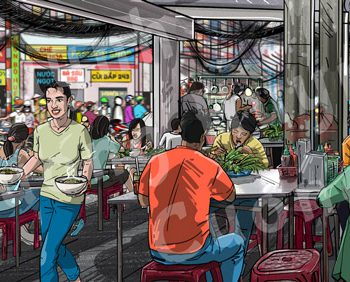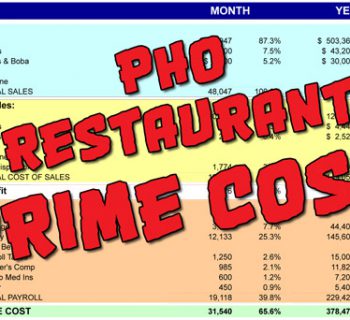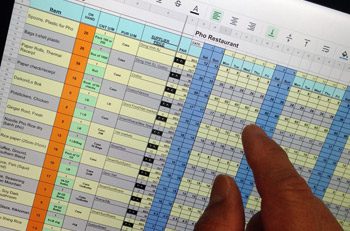Hello Mr. (or Ms.) pho restaurant owner. Are you aware of how your customers see you, and are you getting the right customer feedback and fix problems so to earn her repeat business?
Good question in today's social-centric world of competitive marketplace. As I help pho restaurateurs improving performance of their businesses, there's always a few common threads among those pho restaurants that are in trouble of making it. If I have to boil it down to a few words, it'd be this: "Understand what your customer is unhappy about your pho restaurant, then fix it fast."
 That sounds simple enough. But understanding those few words and carrying out the right corrective action are two different things. The challenge is a lot tougher when the customer doesn't actually tell you the problem, but she thinks it and she is definitely telling her friends about it. So what is a pho restaurant operator to do?
That sounds simple enough. But understanding those few words and carrying out the right corrective action are two different things. The challenge is a lot tougher when the customer doesn't actually tell you the problem, but she thinks it and she is definitely telling her friends about it. So what is a pho restaurant operator to do?
Here are the 5 toughest challenges a typical pho restaurant faces. If fixed, these 5 will give the best payback potentials for a pho restaurant owner.
- Pho restaurant thinks its pho is good. If your dining room is not filled during meal times, then this may be one of your problems. You think your pho is really good, but your customers may disagree, and the proof is they don't come for your pho anymore. You may blame it on the competition or the economy, but is there a chance that your pho is really not that great? Regardless of what a few individuals may tell you, almost all people vote with their pocket books.
- What to do: This one is pretty straightforward to start: ask your customers what they think about your food. A good place to start is a simple survey, then conduct surveys regularly to monitor your progress.
- Servers do not provide good service. In general, service is improving a bit with newer pho restaurants opened by a younger generation. But the fact is many Vietnamese restaurants still cannot shake the stigma of being well-known for "no service" or "bad service". It's gotten to the point that bad service is almost expected, and any great service constitutes a pleasant surprise for the customers. It's time to change, and it's very easy to change.
- What to do: Pay attention to your front of the house staff's performance, then provide detailed training for new employees as well as regular refresher for existing employees.
- Pho restaurant is dirty and looks run down. Okay, here's another one. Vietnamese restaurants are known for being not very well kept, and for having dirty restrooms. Just as in number 2. above, younger generation restaurant operators are making positive changes, but by and large, Vietnamese restaurants are still well-known for not keeping things up to par. Dirty restrooms aside, I'd also worry about sanitation in the kitchen and related food safety issues.
- What to do: This one is pretty easy: spend proper time to keep your business clean. A good point to start is creating checklists and assign rotating responsibilities to your staff. Make sure you include training on the importance of both food safety and proper sanitation techniques.
- You let your chef run your pho restaurant. Here's something a typical customer may not know: unless the owner is also the chef, many pho restaurants are at the mercy of the hired chef. It's never a good situation, but it happens more often than I can count. For some reason, pho restaurant owners think it doesn't happen to them, or maybe the problem will resolve on its own over time. The fact is, owners just hire a chef and let him/her run the kitchen with no guidelines, no policies, no disciplines. Bad.
- What to do: This one depends a lot on a strong owner. Let's face it, if you can't control your chef, then your pho restaurant won't have a chance of surviving. Here's what you do: first write down what your policies for both food quality and staff conduct are, then make sure everyone is trained and understand your policies. Finally, prepare yourself to replace those who don't follow the rules.
- You're not familiar with your numbers. Another behind the scene item not visible to the public, but may be one of the most important things, if not the most important thing, for any restaurant. Restaurateurs must know their numbers. I'm talking sales, fixed and variable costs, and other expenses to sufficient details in order to understand, monitor, and improve their operation. In a foodservice business, everything is inter-related, and the more detailed numbers is known, the better and more effective management of the restaurant can be carried out.
- What to do: Work with your accountant to set up the books for regular and quick reviews of your restaurant's numbers. Initially, you must be able to review your numbers at anytime (hourly, daily, etc.) Once you're familiar with the process, you can do a weekly review. In my opinion, if your restaurant is important to you, then you'll want to know your number by the hour, at least in the beginning. Your ability to collect data mentioned here is closely related to your point of sale (POS) and its ability to store information. It may be time to review what's out there in the POS world.
In summary, customer demands evolve fast these days. For a pho restaurateur, this means making improvements to meet new customer demands and expectations. It also means doing what your customers like, not what you as an owner likes. In order to evolve, the pho restaurant owner needs to first accept that he/she needs to evolve, and then chart the path of change to serve the paying customers. Making the changes are actually pretty easy. The accepting to make the change is the hardest part.
So what's your opinion as a customer who love to frequent a local pho joint? And if you're a pho restaurant owner, what's your viewpoint?
Share with us in the comments below.



